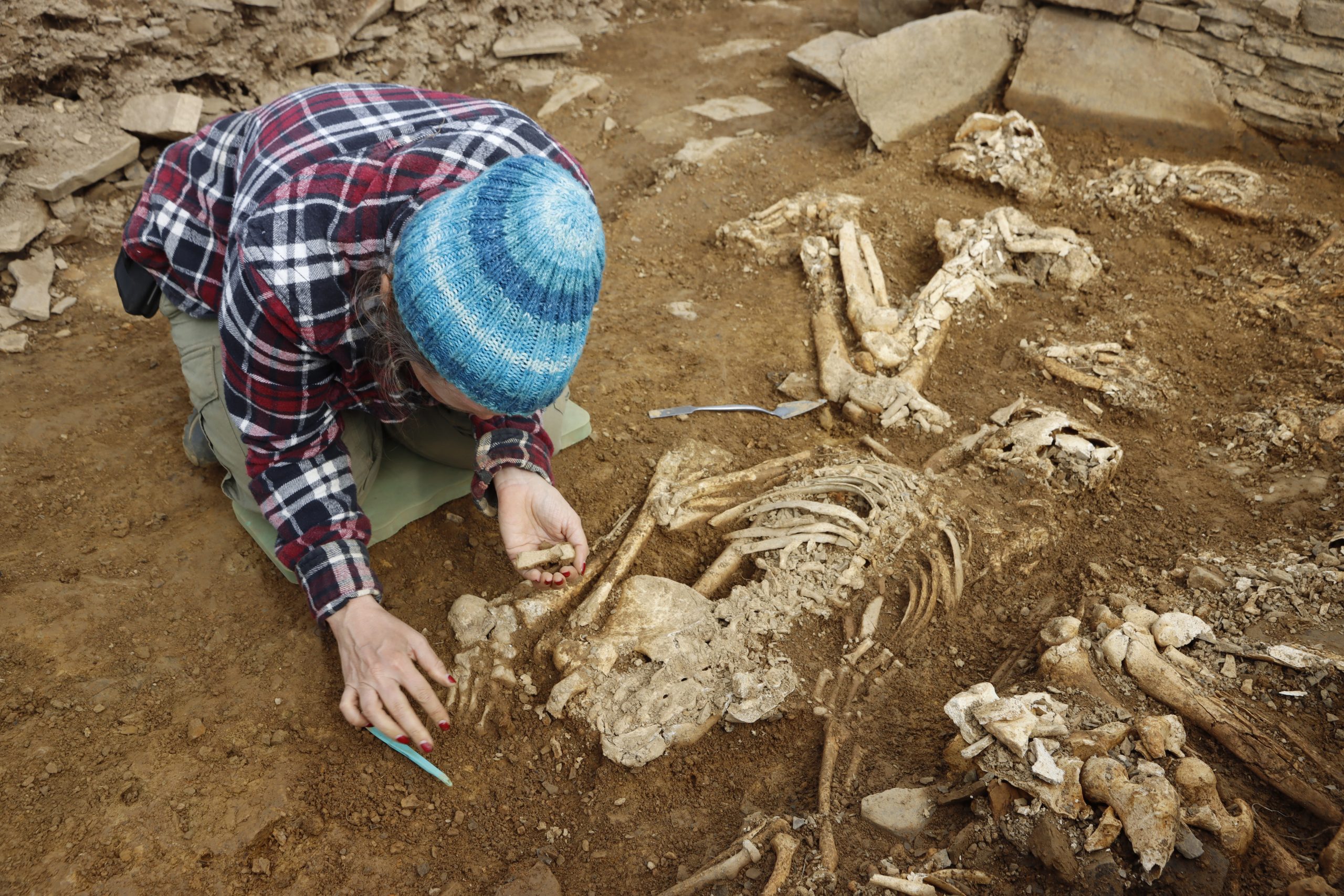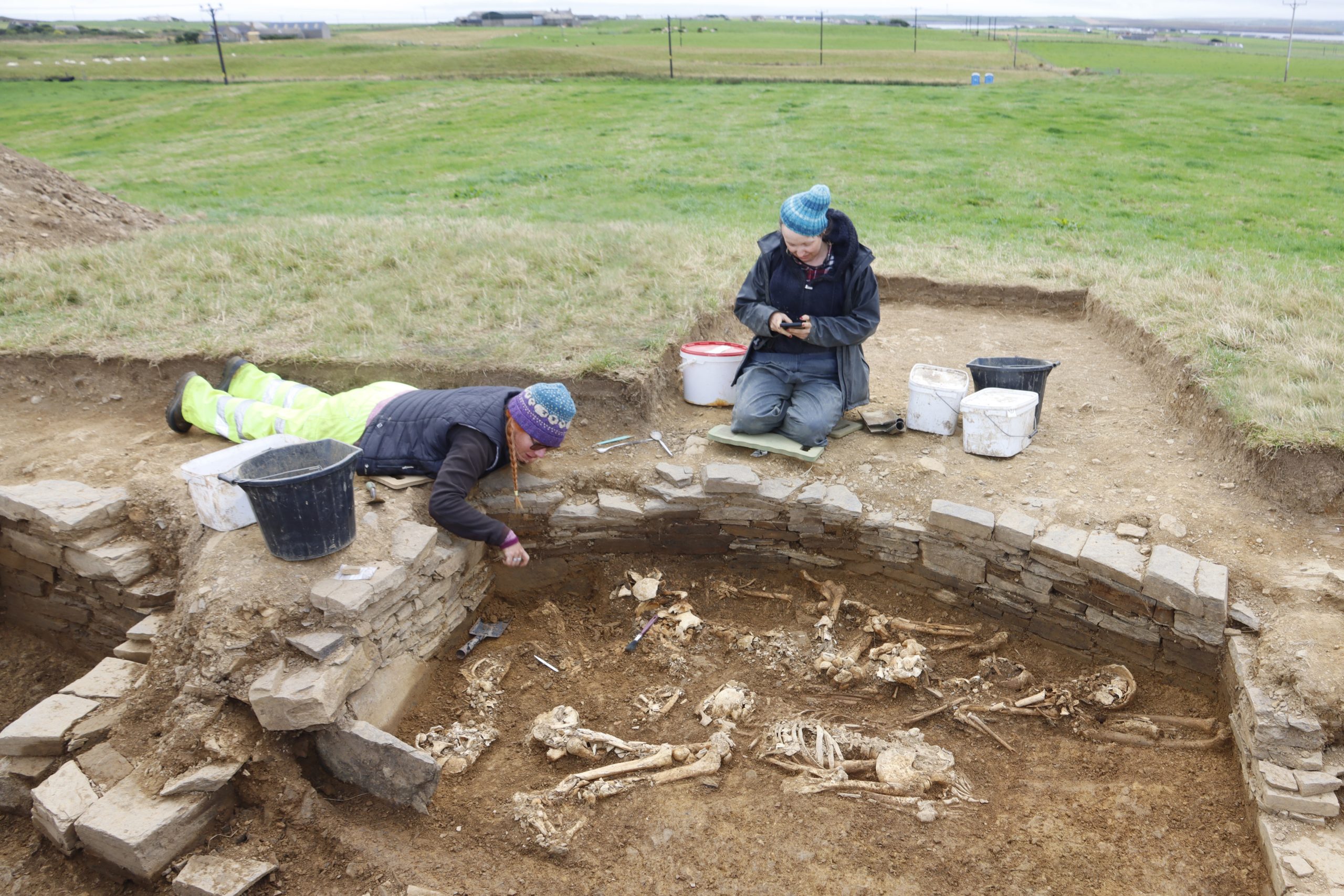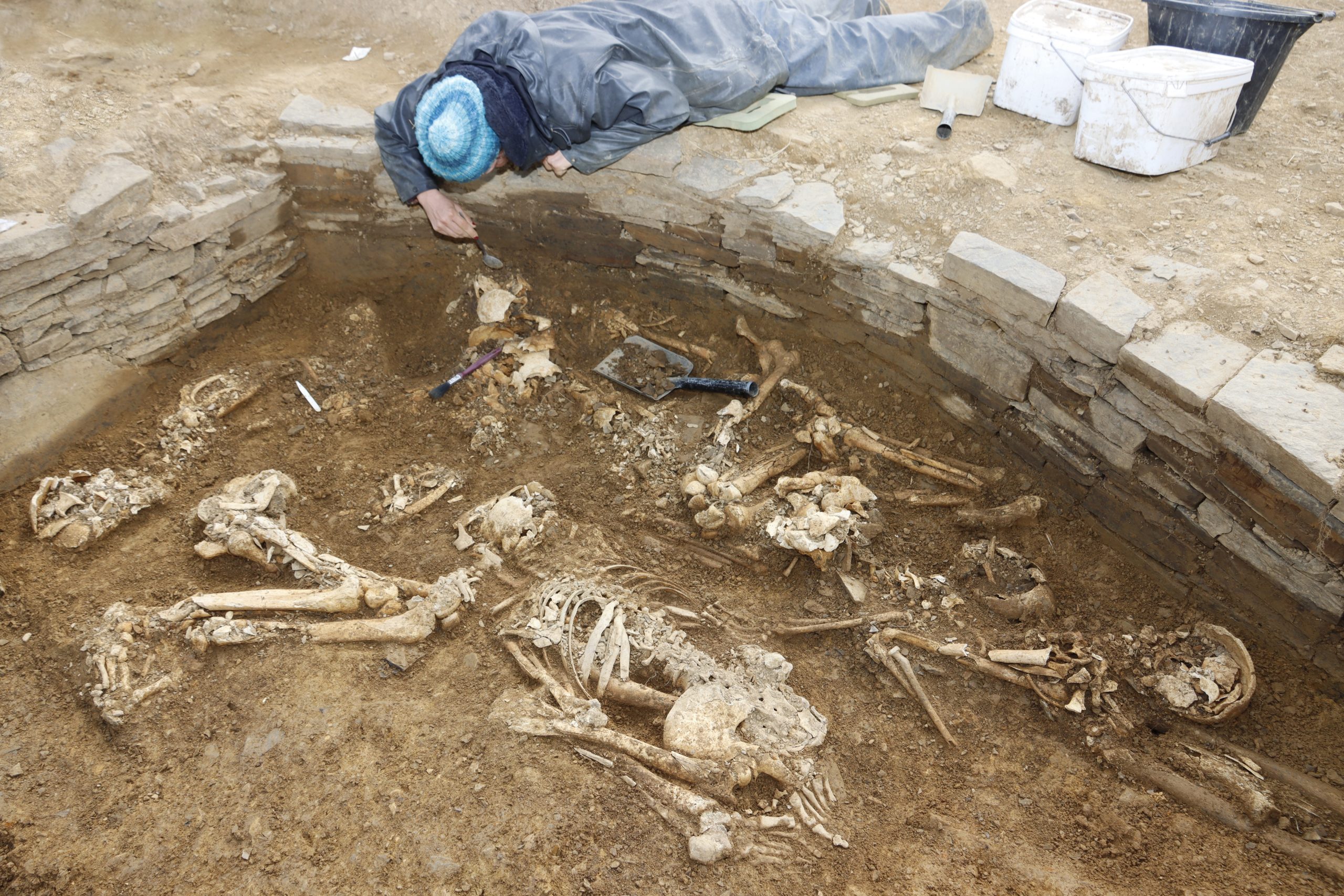Archaeologists have discovered the ruins of an incredibly rare 5,000-year-old Neolithic tomb in Orkney.
Fourteen articulated skeletons of men, women and children – two positioned as if they were embracing – were found at the site at Holm, East Mainland.
The three-week excavation has revealed traces of a stone cairn 15m in diameter, which had contained a 7m-long passage.
A stone chamber lay at the centre of the cairn and was surrounded by six smaller cells..
It was buried beneath a pasture field as it was largely destroyed in the late 18th or early 19th century to supply building stone for a nearby farmhouse.

The excavation was directed by Dr Hugo Anderson-Whymark, National Museums Scotland, and Professor Vicki Cummings, Cardiff University.
‘Orkney is exceptionally rich in archaeology, but we never expected to find a tomb of this size in a such a small-scale excavation,’ said Dr Anderson-Whymark.
‘It’s incredible to think this once impressive monument was nearly lost without record, but fortunately just enough stonework has survived for us to be able understand the size, form and construction of this tomb.’
The tomb is classed as a ‘Maes Howe-type’ passage grave, according to experts.

Only 12 tombs of this type are known in Orkney, including Maes Howe, Cuween and Quoyness and they are considered the pinnacle of Neolithic engineering in northern Britain.
Further digging in the ruins by the farmer’s son in 1896 revealed traces of walling and located a stone macehead and ball, and eight skeletons.
These discoveries were reported in The Orcadian by the local antiquary James Walls Cursiter, who speculated that the site was a ruined tomb.
The rare and unusual nature of the 1896 discoveries prompted the current search.

Alongside the skeletons, other human remains and artefacts, including pottery, stone tools and a bone pin, were recovered from the Victorian backfill of the tom
‘The preservation of so many human remains in one part of the monument is amazing, especially since the stone has been mostly robbed for building material,’ said Prof Vicki Cummings.
‘It is incredibly rare to find these tomb deposits, even in well-preserved chambered tombs and these remains will enable new insights into all aspects of these peoples’ lives.’
Read more on Scottish Field’s News pages.
Plus, don’t miss the November issue of Scottish Field magazine.
TAGS

